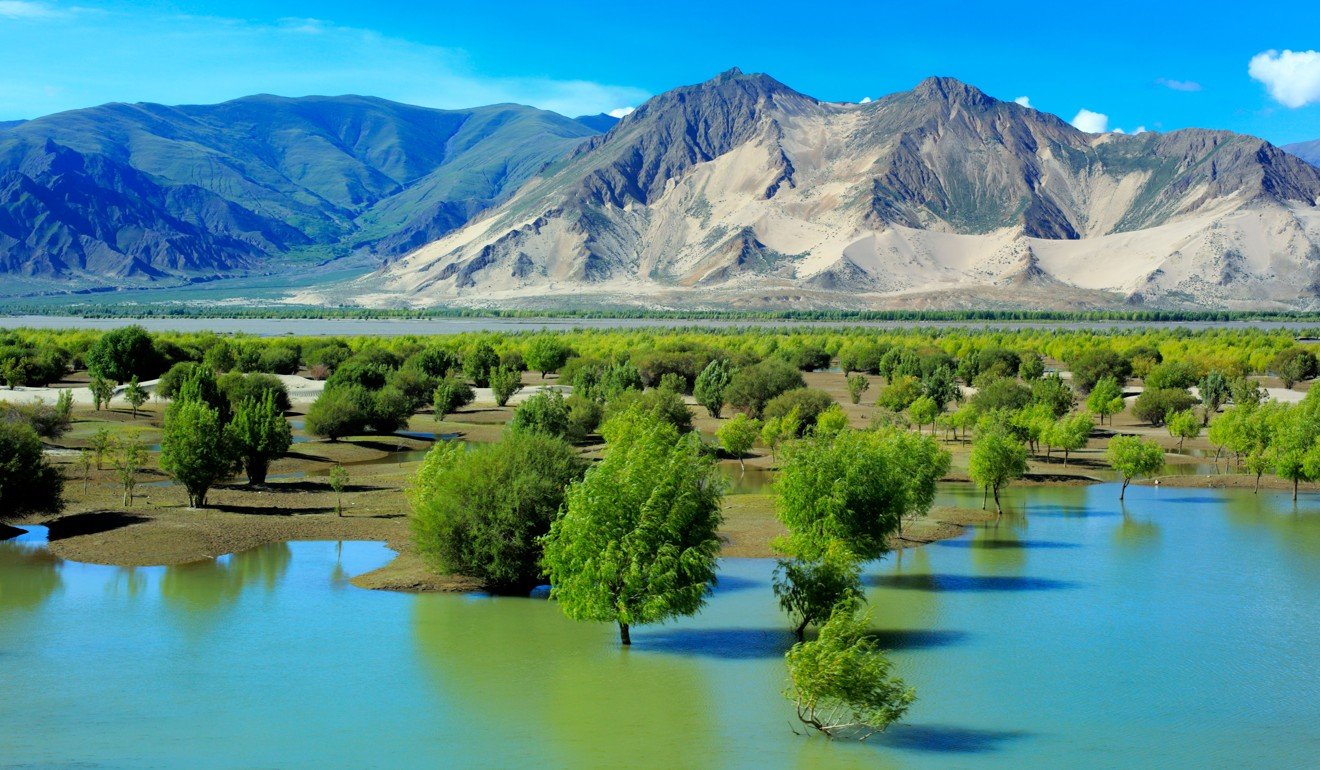China’s planning a 1,000km tunnel to divert water away from one of India’s largest rivers
Now this seem like a good idea killing 2 birds at the same time converting Xinjiang dessert into land of milk and honey aka California. While at the same time potentially reducing the water flow to Brahma putra if India get too aggressive
Here is abbreviated version of the report in SCMP
Chinese engineers plan 1,000km tunnel to make Xinjiang desert bloom
via broadsword from CDF
China is working on an incredibly ambitious water diversion project involving the Brahmaputra, one of India’s largest rivers, which may become another point of tension between the two Asian neighbours.
Chinese engineers are testing techniques that could be used to build a 1,000-kilometre (km) tunnel—the world’s longest—to carry water from Tibet to Xinjiang, a barren region in northwest China, according to
(SCMP). The project would divert water from the Yarlung Tsangpo River in southern Tibet, which turns into the Brahmaputra once it enters India, to the Taklamakan desert in Xinjiang.
“The proposed tunnel, which would drop down from the world’s highest plateau in multiple sections connected by waterfalls, would ‘turn Xinjiang into California’,” the SCMP reported, quoting an anonymous geotechnical engineer. Xinjiang, China’s largest administrative division, comprises vast swathes of uninhabitable deserts and dry grasslands.
The feasibility of the proposed Tibet-Xinjiang project is being tested along a 600km tunnel in China’s Yunnan region.
“The water diversion project in central Yunnan is a demonstration project,” Zhang Chuanqing, a researcher at the Chinese Academy of Sciences’ Institute of Rock and Soil Mechanics, told the SCMP. Chuanqing, according to the newspaper, has played a key role in many major Chinese water tunnel projects. “It is to show we have the brains, muscle, and tools to build super-long tunnels in hazardous terrains, and the cost does not break the bank,” he said.
The Yunnan project comprises over 60 sections, all of which are wide enough to fit in two high-speed trains, that will pass through high-altitude mountains. “Fault zones are our biggest headache,” Zhang explained. “If we can secure a solution, it will help us get rid of the main engineering obstacles to getting water from Tibet to Xinjiang.”
Over the years, China has developed exceptional infrastructure-building capabilities, some of which have been implemented in the Tibet region. “Nobody thought that there could be a railway line in Tibet, but the Chinese government has done so. So, there shouldn’t be any doubts about China building the tunnel,” Lobsang Yangtso, a research associate at the non-profit coalition, International Tibet Network, told Quartz.
But Yangtso warned that the Tibet Plateau has been witnessing climate change, with water crises in many parts of the Himalayan region. “The region is also earthquake-prone and it could lead to a huge natural disaster,” she added. Moreover, any project that diverts water from upstream Brahmaputra is likely to rile up both New Delhi and Dhaka, as the river is a major water resource for both northeastern India and Bangladesh. India has, in the past, raised
being built on the Yarlung Tsangpo.
“There are currently no water treaties between India, China, and Bangladesh,” said Yangtso, whose research has focused on Chinese environmental policies in Tibet. “India will certainly have to take a strong stand as far as this project goes, as it can be disastrous for India and Bangladesh.”

